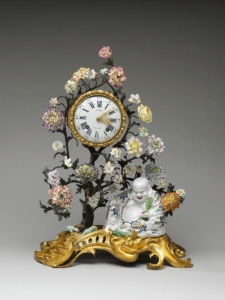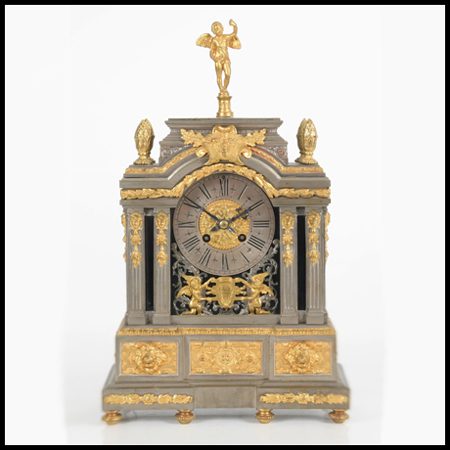A Tradition of Elegance and Craftsmanship
French mantel clocks have long been regarded as some of the most exquisite timepieces ever created. Unlike their American counterparts, which often emphasized functionality and mass production, these European treasures were designed as both instruments of timekeeping and as works of art. From the 18th century through the height of the 19th century, clockmakers in France pushed the boundaries of design, bringing together sculptors, gilders, and horologists to create intricate masterpieces that still captivate collectors today.
The Artistic Flourish of French Mantel Clocks
One of the defining qualities of French mantel clocks is their dedication to artistry. French clockmakers worked hand-in-hand with artists to craft cases that reflected the trends of their time. Rococo flourishes, Neoclassical columns, and gilded bronze figures were all common features. Some clocks were adorned with allegorical scenes, mythological gods, or finely detailed pastoral motifs, turning each piece into a narrative as well as a timekeeper.
By contrast, American mantel clocks of the 19th century leaned heavily on simpler wooden cases, with functionality and affordability driving production. Where French mantel clocks dazzled with gilt bronze and marble bases, American models often favored walnut or mahogany veneers with minimal embellishment. This difference speaks to cultural priorities: in France, a mantel clock was not just for telling the hour, it was a statement of taste, refinement, and wealth.
Materials That Spoke of Luxury

The materials chosen for French mantel clocks further highlight their superiority in design intricacy. Gilded ormolu (gilded bronze), marble, and even porcelain were commonly used. These materials allowed artists to create fine detail—garlands, drapery folds, cherubic faces—that wood or plainer metals simply could not capture in the same way. Sèvres porcelain panels, often painted by hand, added vibrant color and romantic scenes to the cases, elevating them to a level of artistry far beyond the reach of most American pieces.
American clockmakers such as Seth Thomas and Ansonia produced reliable, durable, and attractive timepieces, but they rarely ventured into this world of luxury materials. Their clocks were made for the middle class, meant to be practical, widely accessible, and produced in high volume. French mantel clocks, however, were crafted for nobility and wealthy patrons who demanded artistry equal to the fine furniture, sculpture, and paintings that decorated their homes.
Movements That Matched the Beauty
It wasn’t only the cases of French mantel clocks that stood out. Their mechanical movements were equally admired for precision and sophistication. Many were eight-day movements with striking mechanisms, chiming on bells or gongs with remarkable clarity. Some even included complications such as calendars or moon-phase indicators. French clockmakers were determined that their artistry extended not only to the eye but also to the ear and the rhythm of daily life.
American mantel clocks, while certainly reliable and inventive in their own right, often simplified movement construction to keep costs lower. French mantel clocks, by contrast, were rarely rushed or compromised for production volume. They were heirlooms in the making, blending functionality with artistry in a way that left a legacy for centuries.
Collecting and Valuing French Mantel Clocks Today
Today, collectors seek out French mantel clocks not only for their function but for the history and artistry embedded in each piece. The market often rewards the most elaborate and well-preserved examples—those with finely chased gilt bronze, intact porcelain panels, or original mechanical movements. Provenance also plays a role; a clock with ties to a notable family or palace can command exceptional value.
American clocks from the same era are certainly collectible, appreciated for their role in making timekeeping accessible to households across the country. But in terms of sheer artistry and intricacy, French mantel clocks remain unrivaled. They are considered treasures of decorative arts, bridging the gap between practical invention and sculptural beauty.
Why They Remain Timeless
Part of the reason French mantel clocks continue to resonate with collectors and historians is their enduring elegance. They embody the craftsmanship of a time when artistry mattered as much as precision. Unlike their plainer American cousins, these clocks were designed to dazzle, inspire, and stand proudly as the centerpiece of a room. Each clock tells not just the time, but a story of the era in which it was made—an era of refinement, grandeur, and artistic ambition.
Conclusion
French mantel clocks are more than just instruments of time—they are a celebration of design, artistry, and culture. Their intricate details, luxurious materials, and mechanical sophistication distinguish them from American mantel clocks, which were made with practicality and simplicity in mind. To own one of these French creations is to hold a piece of history that combines function with beauty, embodying the spirit of an age where craftsmanship reigned supreme.


